
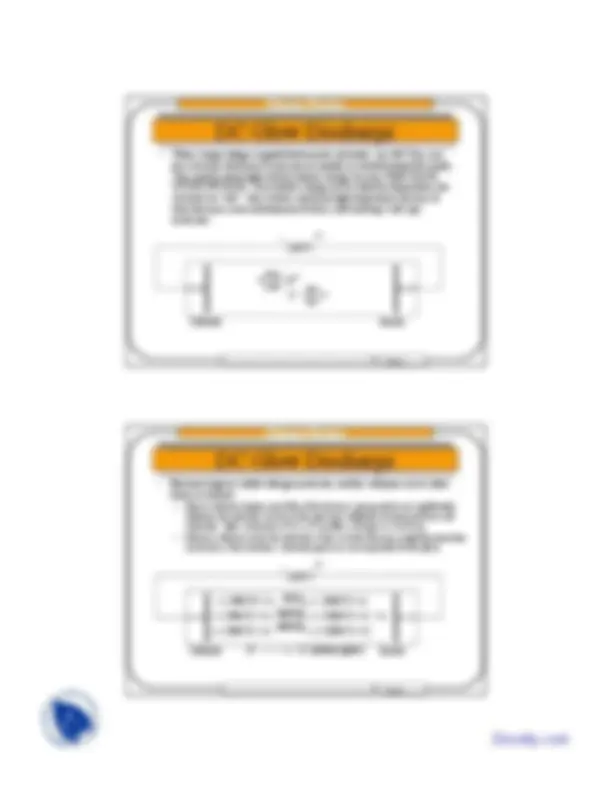
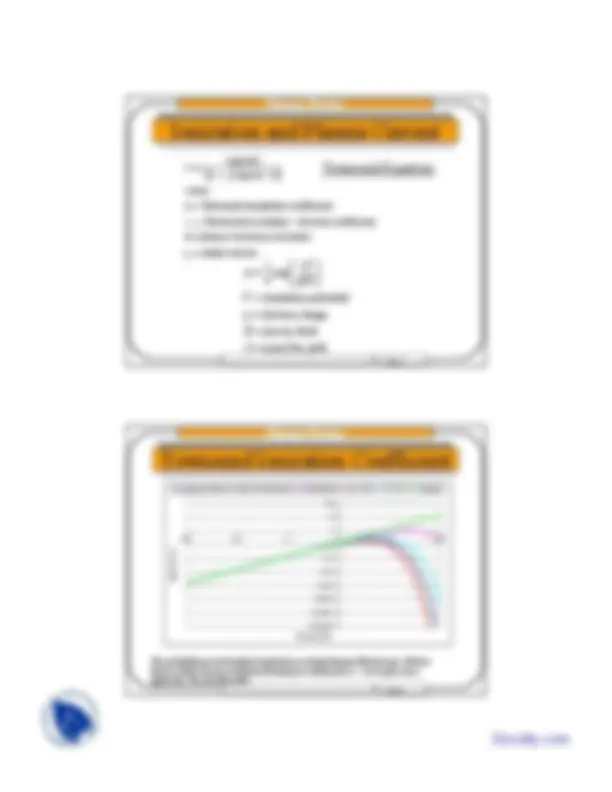
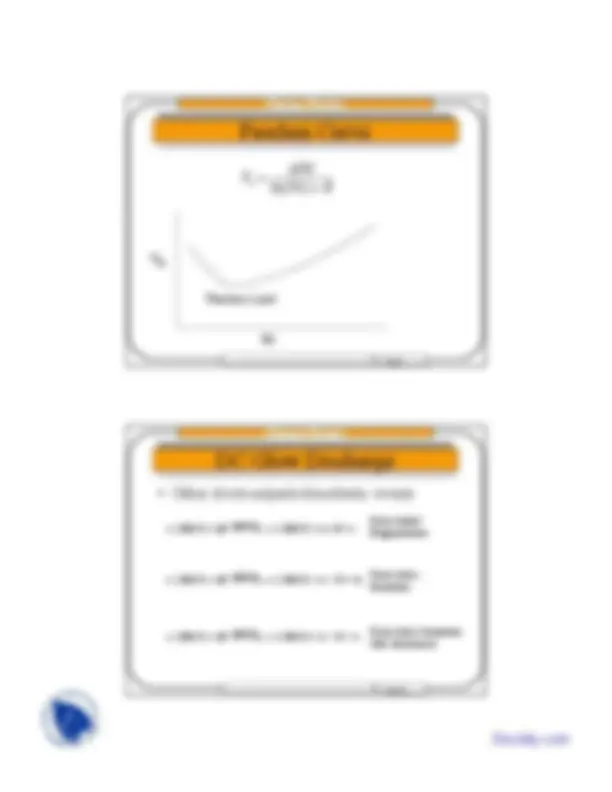
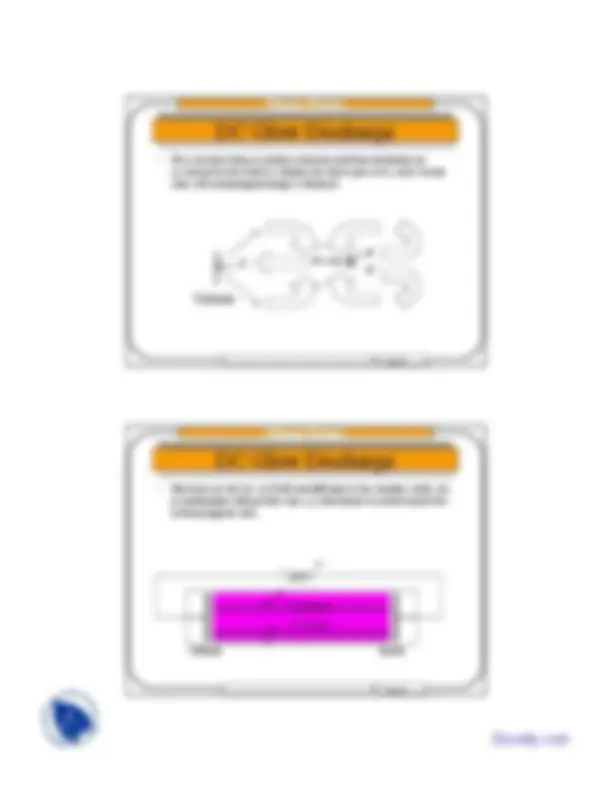
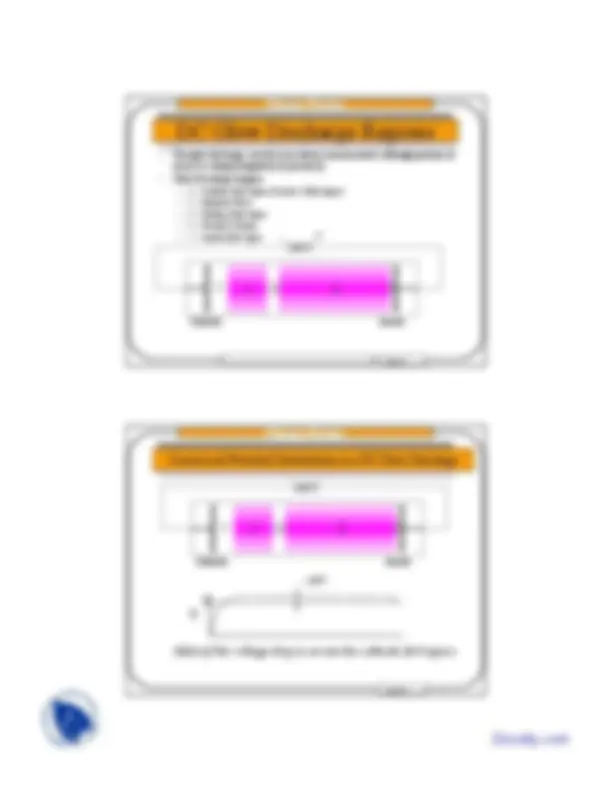
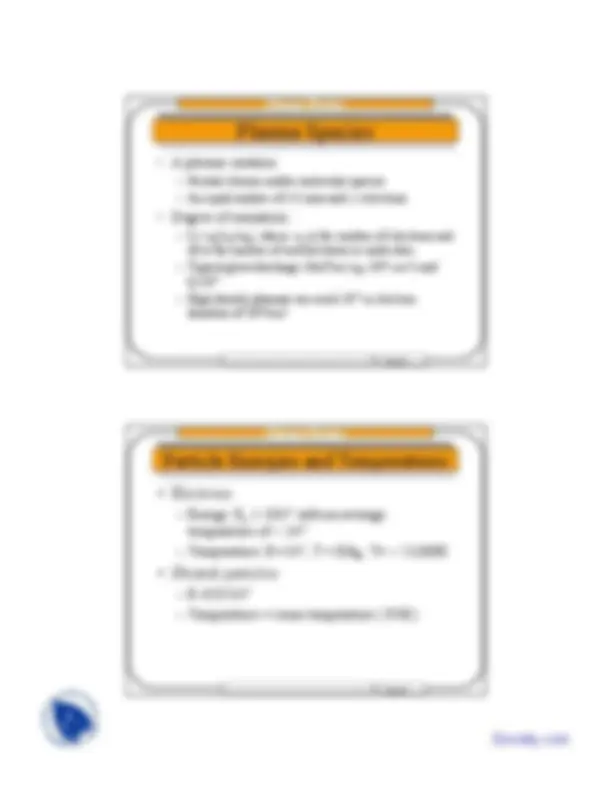
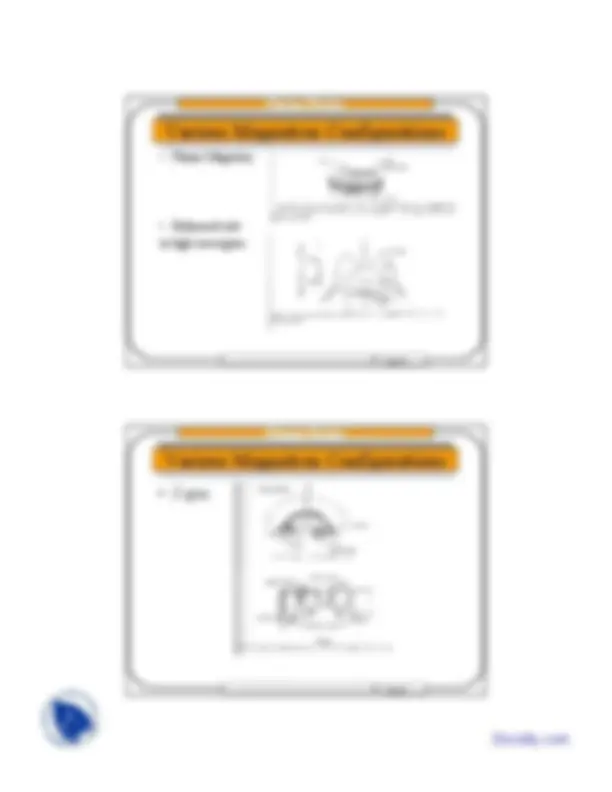
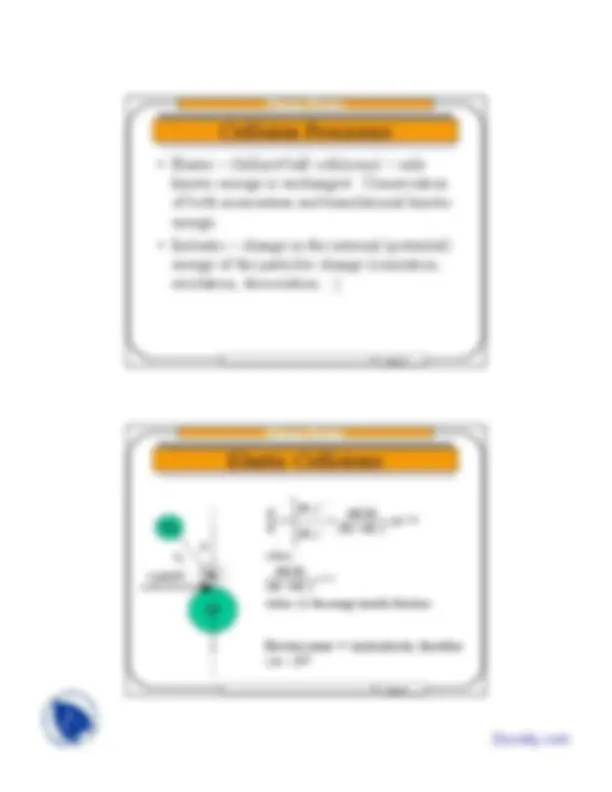
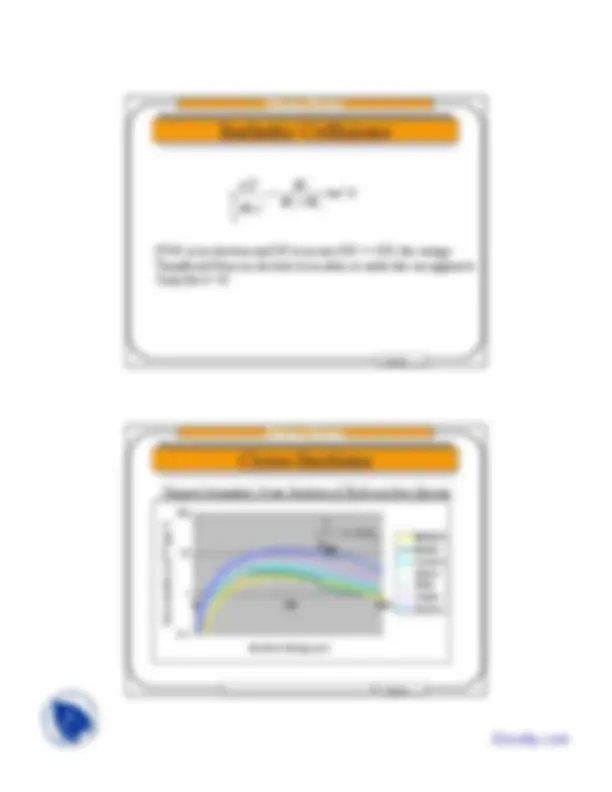


Study with the several resources on Docsity

Earn points by helping other students or get them with a premium plan


Prepare for your exams
Study with the several resources on Docsity

Earn points to download
Earn points by helping other students or get them with a premium plan
Community
Ask the community for help and clear up your study doubts
Discover the best universities in your country according to Docsity users
Free resources
Download our free guides on studying techniques, anxiety management strategies, and thesis advice from Docsity tutors
These are the Lecture Slides of Thin Film Materials Processing which includes Vaporization, Vapor Pressure Curves, Thermal Desorption, Molecular Binding Energy, First Order Desorption, Desorption Rate, Real Surfaces, Diffusion of Gas Particles etc. Key important points are: Plasma Physics, Plasma Properties, Plasma Density, Dc Glow Discharge, Ionization and Plasma Current, Townsend Equation, Ionization Coefficient, Paschen Curve, Particleinelastic Events
Typology: Slides
1 / 17

This page cannot be seen from the preview
Don't miss anything!










Page 1
Plasma Physics
Page 2
Page 3
Plasma Physics
Page 4
A → A+^ + e -
hv
Page 7
i initial current
d distancebetweenelectrodes
Townsendsecondary-electroncoefficient
Townsendionizationcoefficient
1 exp 1
exp( )
0
e
0
=
=
=
=
− −
=
γ
α
γ α
α
where
d
i i d e
meanfree path
E electricfield
q electroncharge
ionizationpotential
exp 1
=
=
=
=
λ
λ λ
α
i
i
V
qE
V
Plasma Physics
Page 8
The probability per unit length of ionization occurring during an Electron-gas collision. Increase Field, decrease Ionization Potential you will increase α. At low pressure α approaches the mean free path.
1
10
100
0.001 0.01 0.1 1 10 100
Pressure (Pa)
alpha (mm-1)
alpha (d=100mm, Vi=15eV, E=100V/10mm) E=500/10mm Vi = 20 Vi = 10 1/lambda
Page 9
Pd
Paschen Limit
Plasma Physics
Page 10
e -^ (100eV) + AB inelastic e -^ (<100eV) + A + B + e -
e -^ (100eV) + AB inelastic e -^ (<100eV) + A +^ + B + 2e -
e -^ (100eV) + AB inelastic e -^ (<100eV) + A +^ + B-^ + e -
Dissociation/ Fragmentation
Dissociative Ionization
Dissociative Ionization with Attachment
Page 13
100V
e (^) A +
Cathode Anode
Plasma Physics
Page 14
Page 15
e -^ A +
e - e - A + e - e -
Cathode
Plasma Physics
Page 16
100V
Cathode Anode
e-
e-
e-^ + A+ → A e-^ + A → A-
Page 19
Plasma Physics
Page 20
Particle Energies and Temperatures
Page 21
Plasma Physics
Page 22
Page 25
Various Magnetron Configurations
Plasma Physics
Page 26
Various Magnetron Configurations
Page 27
Plasma Physics
Page 28
v
θ
where istheenergy transfer function
( )
4
:
cos ( )
4
2
1
2
1
2 1 2
1 2
2 2 1 2
1 2 2 11
2 2 2 1
2
γ
γ
θ
=
= =
M M
MM
where
M M
MM Mv
Mv E
E
Electron mass << ion/molecule, therefore γ is ~ 10 -
v1 sin(θ)
Page 31
Plasma Physics
Page 32
kT
k T k E
k
k T n n dt
dn
AB
AB
AB A B
p
= −
=
rateconstant ( ) exp
where isthethermallyactivatedreaction
( )
0
Page 33
Electron stimulated reactions:
e- + A → P
( )isthetotalelectroncollisionalcross- section
( )istheelectron velocitydistribution
( )istheelectronenergydistribution
:
( , ) ( ) ( ) ( )
( , )
0
E
v E
f E
where
k eT f E v E E dE
k eT nn dt
dn
T
e
e
e e T
e A
p
σ
=
Plasma Physics
Page 34
0
1
1 10 100 1000 10000 Energy (eV)
Normalized Probability (au)
Cross-section for SF 6
Secondary Electron Distribution